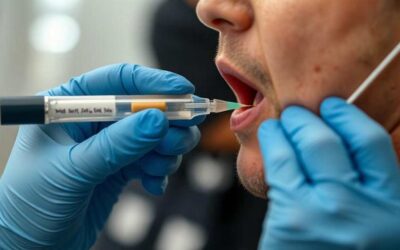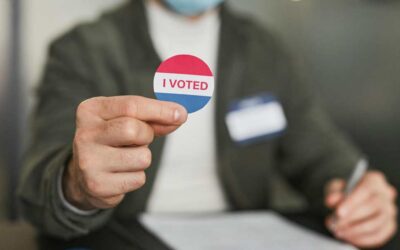This Study was released in 2010 but has very good information.
Abstract
The prevalence of both alcohol and cannabis use and the high morbidity associated with motor vehicle crashes has lead to a plethora of research on the link between the two. Drunk drivers are involved in 25% of motor vehicle fatalities, and many accidents involve drivers who test positive for cannabis. Cannabis and alcohol acutely impair several driving-related skills in a dose-related fashion, but the effects of cannabis vary more between individuals than they do with alcohol because of tolerance, differences in smoking technique, and different absorptions of Δ9-tetrahydrocannabinol (THC), the active ingredient in marijuana. Detrimental effects of cannabis use vary in a dose-related fashion, and are more pronounced with highly automatic driving functions than with more complex tasks that require conscious control, whereas with alcohol produces an opposite pattern of impairment. Because of both this and an increased awareness that they are impaired, marijuana smokers tend to compensate effectively while driving by utilizing a variety of behavioral strategies. Combining marijuana with alcohol eliminates the ability to use such strategies effectively, however, and results in impairment even at doses which would be insignificant were they of either drug alone. Epidemiological studies have been inconclusive regarding whether cannabis use causes an increased risk of accidents; in contrast, unanimity exists that alcohol use increases crash risk. Furthermore, the risk from driving under the influence of both alcohol and cannabis is greater than the risk of driving under the influence of either alone. Future research should focus on resolving contradictions posed by previous studies, and patients who smoke cannabis should be counseled to wait several hours before driving, and avoid combining the two drugs.
1. Introduction
Accidents are the fifth leading cause of death in the US; nearly half are motor vehicle accidents, which according to the Fatality Analysis Reporting System (FARS) killed 38,588 people in 2006 alone.1 Motor vehicle accidents are the nation’s leading cause of death in those under 30.2 The contribution of drugs of abuse to this accident rate has attracted increasing attention in recent years because of the dramatic increase in drug use. In 2002, the National Survey on Drug Use and Health (NSDUH) estimated that 22 million Americans—9.4% of the population—have a substance use or dependence problem. As marijuana is the most commonly used drug of abuse, having been tried by 40% of the population,3 and is also smoked most commonly in the age group that also has the most road traffic accidents, the contribution of marijuana smoking to road traffic accidents is of great concern to both governments and clinicians responsible for counseling patients with substance abuse problems. Moreover, given the paucity of data supporting marijuana’s acute toxicity, the most serious possible consequence of acute cannabis use is a road traffic accident from driving while intoxicated.4 The very high cost of crashes, both human and financial, underlines the importance of understanding the extent to which marijuana use contributes to such accidents. The purpose of this paper is to review the scientific evidence on the effects on driving while intoxicated with marijuana and contrast this with the effects of alcohol intoxication.
Looking for a frontline attorney that will fight in the trench beside you against the “justice” system ?
Attorney Michael Komorn – provides aggressive DUI, drugged driving and criminal defense.
Call The Office 248-357-2550 or visit KomornLaw.com
2. Epidemiology of marijuana smoking and road traffic accidents
The rising prevalence of cannabis use, its increased availability and potency,5 lower prices, widespread social tolerance, and earlier age of onset of use have combined to increase the number of users and hence the number of people subject to cannabis use disorders.6 Peak initiation is at age 18, and ten years later, 8% of users are marijuana-dependent.7 Most cannabis use is intermittent and time-limited, however; users generally stop in their mid-to-late 20s, and only a small minority continue in daily use over a period of years.8
Young people also account for a disproportionate number of road traffic accidents. According to the National Center for Statistics and Analysis, the fatality rate for teenagers is four times that of drivers age 25 to 69, and drivers under age 25 account for a quarter of all traffic fatalities.9 Risk factors for having a fatal traffic accident include being a young man, having psychological characteristics such as thrill-seeking and overconfidence, driving at excessive speed, driving late at night, failing to wear a seatbelt, and lacking familiarity with the vehicle.10 The risk factors for adolescent marijuana use are somewhat overlapping—delinquency (vandalism, shoplifting, joyriding etc.), poor school performance, and substance use by self and peers.11
The National Highway Transportation Safety Administration (NHTSA) reported that in 25% of all motor vehicle crash fatalities, the driver had a blood alcohol concentration (BAC) of 0.01 g/dL (one eighth the legal limit) or greater, and in 21-year-old drivers, that figure rose to 39%.12 Drivers with a previous DWI (“Driving While Impaired”) conviction were responsible for 7.2% of all crashes involving alcohol.
In comparison, the percentage of road traffic accidents in which one driver tested positive for marijuana ranges from 6% to 32%.13, 14 In one study, 9.7% of cannabis smokers reported having driven under the influence in the previous year; those who did drove while intoxicated an average of 8.1 times during the year.15 Among those who seek treatment for cannabis problems, more than 50% report having driven while “stoned” at least once in the previous year.16, 17
3. Studies relevant to marijuana and smoking
Three types of studies are generally performed to help assess the risk that smoking marijuana may increase the probability of having a fatal traffic accident. The first are cognitive studies that measure the effects of smoking marijuana on cognitive processes that are considered to be integral to safe driving. The second are experimental studies on the collision risk of people under the influence of marijuana. The third are descriptive and analytic epidemiological studies on the relationship between cannabis use and accidents, usually performed through drug testing of injured drivers.
3.1 Cognitive studies
Attentiveness, vigilance, perception of time and speed, and use of acquired knowledge are all affected by marijuana;18–21 in fact, a meta-analysis of 60 studies concluded that marijuana causes impairment in every performance area that can reasonably be connected with safe driving of a vehicle, such as tracking, motor coordination, visual functions, and particularly complex tasks that require divided attention,22 although studies on marijuana’s effects on reaction time have been contradictory.23 Similar conclusions have been reached by other reviewers.2 Worse still, marijuana and alcohol, when used together, have additive or even multiplicative effects on impairment.24 Consequently, on the basis of cognitive studies, it seems reasonable to propose that smoking marijuana may increase the risk of having a fatal traffic accident.
Alcohol at 0.75 g/kg (slightly less than four standard drinks) causes high levels of impairment in psychomotor performance and medium-to-high levels of impairment in such tasks as critical flicker fusion and short-term memory.25 Alcohol impairs pursuit tracking, divided attention, signal detection, hazard perception,26–28 reaction time, attention, concentration, and hand-eye coordination.29, 30
Alcohol also reduces the perceived negative consequences of risk-taking,31 which can increase willingness to take risks after drinking,32 the amount of risk-taking behavior while driving, even at low alcohol doses,33 and the incidence of road traffic accidents while driving drunk.34, 35 However, there is considerable variability in the effects that alcohol can have on people—the same dose may have different effects not only on different individuals, but also in the same individual on different occasions, because of other factors such as gender, body mass index, age, drinking habits, time of day, stomach contents, genetics, stage of the menstrual cycle, and environmental factors.36
3.2 Experimental research (driving and simulator studies)
Experimental research measures the potential risk of an accident using a driving simulator or driving course.
3.2.1 Studies that do not show impairment
Surprisingly, given the alarming results of cognitive studies, most marijuana-intoxicated drivers show only modest impairments on actual road tests.37, 38 Experienced smokers who drive on a set course show almost no functional impairment under the influence of marijuana, except when it is combined with alcohol.39
Many investigators have suggested that the reason why marijuana does not result in an increased crash rate in laboratory tests despite demonstrable neurophysiologic impairments is that, unlike drivers under the influence of alcohol, who tend to underestimate their degree of impairment, marijuana users tend to overestimate their impairment, and consequently employ compensatory strategies. Cannabis users perceive their driving under the influence as impaired and more cautious,40 and given a dose of 7 mg THC (about a third of a joint), drivers rated themselves as impaired even though their driving performance was not; in contrast, at a BAC 0.04% (slightly less than two “standard drinks” of a can of beer or small 5 oz. glass of wine; half the legal limit in most US states), driving performance was impaired even though drivers rated themselves as unimpaired.41 Binge drinkers are particularly likely to rate themselves as unimpaired, possibly because they tend to become less sedated by high doses of alcohol.42
This awareness of impairment has behavioral consequences. Several reviews of driving and simulator studies have concluded that marijuana use by drivers is likely to result in decreased speed and fewer attempts to overtake, as well as increased “following distance”. The opposite is true of alcohol.43 One review of eight driving simulator studies and seven on-road studies44 found that cannabis use was associated with either poor lane control41, 45–48 or slower driving that successfully maintained lane control.49–51 In seven of ten studies cited, cannabis use was associated with a decrease in driving speed despite explicit instructions to maintain a particular speed, whereas under the influence of alcohol, subjects consistently drove faster. Two simulator studies showed that the tendency to overtake was decreased with cannabis use but increased with alcohol.52, 53 One simulator study and two on-road studies examining car-following behavior concluded that cannabis smokers tend to increase the distance between themselves and the car in front of them.41, 45 Other studies have found no adverse effects of marijuana use on sign detection,49 a sudden lane-changing task,43 or the detection of and response to hazardous events.48
3.2.2 Studies that show impairment
Not all deficits can be compensated for through the use of behavioral strategies, however. Both alcohol and marijuana use increase reaction time and the number of incorrect responses to emergencies.43 Drivers under the influence of marijuana were not able to compensate for standard deviation of lateral position (SDLP, a measure of staying within lane), which increased with increasing doses of THC. This is a measure that is not subject to conscious compensatory mechanisms in the way that other aspects of driving are. Other studies have found poorer monitoring of the speedometer under the influence of marijuana,54 increased decision time when passing,52 increased time needed to brake when a light suddenly changes,55 and increased time to respond to a changing light45, 56 or sudden sound.57 Drivers also crashed more frequently into a sudden obstacle on a high dose of marijuana, although this did not happen at a low dose.45
Meta-analyses of over 120 studies have found that in general, the higher the estimated concentration of THC in blood, the greater the driving impairment, but that more frequent users of marijuana show less impairment than infrequent users at the same dose, either because of physiological tolerance or learned compensatory behavior. Maximal impairment is found 20 to 40 minutes after smoking, but the impairment has vanished 2.5 hours later, at least in those who smoke 18 mg THC or less (the dose often used experimentally to duplicate a single joint).58, 59
With increasing doses of alcohol, however, there is general dose-dependent lowering of both sustained attention and overall attentional capacity, with consequently more concentration paid to the main component of a complex skill (steering, for example), and less and less attention paid to secondary tasks (such as speed or driving skill). Functional imaging on the effects of increasing doses of alcohol up to a BAC of 0.08% in simulated driving has demonstrated that orbitofrontal areas (subsuming judgment) and motor areas are affected first, then cerebellar areas controlling coordination show functional deterioration, and finally, at high doses, global cognitive networks and simulated driving performance are impaired.60
Interestingly, three reports indicate that chronic marijuana smokers are less susceptible to impairment from alcohol on some measures compared with nonsmokers or infrequent smokers. As far back as 1970, Reese Jones noticed that alcohol’s effects were diminished in heavy cannabis smokers.61 A subsequent study showed that regular cannabis smokers demonstrate less of a decrement in peripheral signal detection under the influence of alcohol than do infrequent users,62 and a later study still found that regular cannabis users given alcohol alone showed less of a decrement in tracking accuracy and dizziness ratings than infrequent users given the same alcohol dose.63 The reason for this is unclear, but is hypothesized to result from either pharmacological or behavioral cross-tolerance between marijuana and alcohol.
3.2.3 Summary of experimental studies
It appears that cannabis use may impair some driving skills (automatic functions such as tracking) at smoked doses as low as 6.25 mg (a third of a joint), but different skills (complex functions that require conscious control) are not impaired until higher doses, and cannabis users tend to compensate effectively for their deficits by driving more carefully. Unexpected events are still difficult to handle under the influence of marijuana, however, and the combination of low-dose alcohol and low-dose cannabis causes much more impairment than either drug used alone.48, 64, 65 Alcohol appears to impair tasks requiring cognitive control more than it does automatic functions, whereas marijuana at a comparable dose impairs automatic functions more than those requiring cognitive control. Together, the effects on impairment are additive and may even be synergistic. Chronic marijuana smokers are less impaired by both alcohol and marijuana than would be expected, however.
3.3 Epidemiologicalstudies
One weakness of driving studies is that subjects are aware of being observed and assessed, so such studies are generally a better measure of what drivers are capable of doing rather than what they actually do. Epidemiological studies attempt to assess the actual risk that a driver may cause an accident under the influence of a drug, relative to that of a sober person driving under similar conditions. The relative risk is expressed in the form of an “odds ratio” (OR), which is the multiplier for the increased accident risk from driving under the influence of marijuana. Two approaches are taken. The first is culpability studies, which classify drivers who have crashed according to their degree of responsibility for the crash, then compare drug use in each category. If there is greater use of the drug in those culpable for crashes, then the drug is judged to be responsible for a greater crash risk. The second is case control studies. We will discuss both in turn.
3.3.1 Culpability studies
3.3.1.1 Studies that do not show culpability
Some reviewers have concluded that there is no evidence that cannabis alone increases the risk of culpability for crashes, and may actually reduce risk.66 Drummer’s review of blood samples of traffic fatalities in Australia found that drivers testing positive for marijuana were actually less likely to have been judged responsible for the accident.67 Several other studies have found no increase in crash risk with cannabis.68–70 Williams’ California study of 440 male traffic accident deaths found that while alcohol use was related to crash culpability, cannabis use was not.71 Terhune’s study of 1882 motor vehicle deaths calculated an OR of 0.7 for cannabis use, 7.4 for alcohol use, and 8.4 for cannabis and alcohol use combined.68 Lowenstein and Koziol-McLain’s study of 414 injured drivers admitted to a Colorado E/R found an OR of 1.1, indicating that marijuana use was not associated with increased crash responsibility.72 Drummer’s later and more extensive ten-year study of 3400 traffic fatalities in three Australian states found that drivers with blood THC levels less than 5 ng/mL, and those with only carboxy-THC present (THC-COOH, a metabolite that is excreted in the urine for weeks and is thus more likely to indicate past use than current use), had an OR of 1.0, but those with serum levels greater than 5 ng/mL had an OR of 6.6, the same as that for a BAC of 0.15%. In all 30 cases in this study in which one driver had a serum level of THC greater than 10 ng/mL, that driver was judged to have been responsible for the accident. When marijuana was combined with alcohol, the risk was higher still.73 A later reanalysis of the same data that adjusted for the age and sex of the fatalities found that OR of crashing for cannabis use alone dropped to 0.6 (not significantly different from 1.0), versus 7.6 for alcohol.66 Laumon’s study of 10,748 French motor vehicle fatalities found that although rates of alcohol and cannabis intoxication were similar (nearly 3%), ten times as many crashes were associated with alcohol as with cannabis; however, investigators noted a dose-dependent effect on OR with increasing THC serum levels, confirming Drummer’s observation by calculating an OR of 4.72 for THC levels greater than 5 ng/mL.74 Longo’s large, well-known study of hospitalized injured drivers in South Australia showed few adverse effects of cannabis on crash risk, although there was a slightly increased risk of crashing with higher THC concentrations and a slightly lower risk with lower concentrations.75
What 5 ng/mL means in terms of actual impairment is hard to calculate, as THC levels in the blood peak quickly following inhalation then decrease rapidly according to complex pharmacokinetics, making it almost impossible to extrapolate backwards from the concentration of THC at the time of the blood test to the concentration at the time of the traffic accident. Some insight can be gained from Jones’ study of 1276 Swedish motorists arrested for DUI with blood tests positive for THC alone, which revealed an average THC blood level of 3.6 ng/mL at the time of testing.76 A similar Swiss study of 440 DUI suspects who also were positive for only THC found average blood concentrations of 5.0 ng/mL at the time of testing, indicating that a residual level of 5 ng/mL does appear to correlate with observable driving impairment earlier.77 The Swedish study also found that, of the 291 DUI arrestees who were positive for both THC and alcohol, the average THC blood level was only 2.3 ng/mL, again suggesting that lower levels of THC, when combined with alcohol, are sufficient to cause obvious impairment.76
Methodological problems often can make culpability studies hard to interpret, however. Since no study has ever shown an increased risk of road accidents among frequent marijuana smokers who are not intoxicated at the time that they drive, a positive urine test that measures levels of the long-lasting metabolite carboxy-THC but not the active ingredient THC is insufficient to classify a driver as intoxicated, as such a measure will include in the marijuana group unimpaired people who have smoked only in the past and thus artificially depress the OR.78 The Colorado study that found that marijuana use was not associated with increased crash responsibility used urine toxicology to assess drug use, so likely suffered from this limitation.72 Sampling delays in excess of an hour can cause an underestimation of THC concentration in the blood of injured drivers who test positive for marijuana, possibly explaining Longo and others’ failure to find adverse effects.
Alcohol levels, which have linear pharmacokinetics, are easier to back-calculate to the time of the accident, and are consistently linked with increased culpability in crashes.71, 75 Moreover, whereas CNS levels of alcohol, which moves easily throughout the body with little difference in concentration between compartments, can be approximated with a good degree of accuracy through measuring blood or breath levels, the same is not true of THC, which is highly lipophilic and concentrates preferentially in adipose tissue. Consequently, experimental studies have shown that functional impairment (which reaches a maximum an hour after smoking) lags behind THC blood level (which peaks within minutes and decreases rapidly thereafter).79 (Figure 1) This makes it much harder to generate blood level versus impairment curves for marijuana than it is for alcohol.

Read the Rest Here —> https://www.ncbi.nlm.nih.gov/pmc/articles/PMC2722956/
R. Andrew Sewell, MD,James Poling, PhD, and Mehmet Sofuoglu, MD, PhDAuthor informationCopyright and License informationDisclaimerThe publisher’s final edited version of this article is available at Am J AddictSee other articles in PMC that cite the published article.
References
1. National Highway Traffic Safety Administration. Fatality Analysis Reporting System (FARS) National Center for Statistics and Analysis. 2008 [Google Scholar]
2. Centers for Disease Control and Prevention. National Center for Injury Prevention and Control, Centers for Disease Control and Prevention. 2008. Web-Based Injury Statistics Query and Reporting System (WISQUARS) [Google Scholar]
3. Office of Applied Studies. Results from the 2005 National Survey on Drug Use and Health: National Findings. Rockville, MD: Substance Abuse and Mental Health Services Administration; 2006. [Google Scholar]
4. Hall W, Solowij N, Lemon J. The health and psychological consequences of cannabis use. Canberra: Australian Government Publishing Service; 1994. [Google Scholar]
5. ElSohly M, Ross S, Mehmedic Z, Arafat R, Yi B, Banahan Br. Potency trends of delta-9-THC and other cannabinoids in confiscated marijuana from 1980–1997. Journal of Forensic Sciences. 2000;45(1):24–30. [PubMed] [Google Scholar]
6. Dennis M, Babor TF, Roebuck MC, Donaldson J. Changing the focus: the case for recognizing and treating cannabis use disorders. Addiction. 2002 Dec;97 (Suppl 1):4–15. [PubMed] [Google Scholar]
7. Wagner FA, Anthony JC. From first drug use to drug dependence; developmental periods of risk for dependence upon marijuana, cocaine, and alcohol. Neuropsychopharmacology. 2002 Apr;26(4):479–488. [PubMed] [Google Scholar]
8. Bachman DS. Smoking cessation via telephone counseling & tools for helping your patients quit smoking once and for all. J Ark Med Soc. 1997 Sep;94(4):147–148. [PubMed] [Google Scholar]
9. National Highway Traffic Safety Administration. Traffic Safety Facts 2000: A Compilation of Motor Vehicle Crash Data from the Fatality Analysis Reporting System and the General Estimates System. Washington, DC: National Center for Statistics and Analysis, U.S. Department of Transportation; 2001. [Google Scholar]
10. World Health Organization. World Report on Road Traffic Injury Prevention. Geneva, Switzerland: World Health Organization; 2004. [Google Scholar]
11. van den Bree MB, Pickworth WB. Risk factors predicting changes in marijuana involvement in teenagers. Arch Gen Psychiatry. 2005 Mar;62(3):311–319. [PubMed] [Google Scholar]
12. Subramanian R. Alcohol Involvement in Fatal Motor Vehicle Traffic Crashes, 2003. Springfield, VA: National Highway Traffic Safety Administration (NHTSA); 2005. [Google Scholar]
13. McLean S, Parsons RS, Chesterman RB, Dineen R, Johnson MG, Davies NW. Drugs, alcohol and road accidents in Tasmania. Med J Aust. 1987 Jul 6;147(1):6–11. [PubMed] [Google Scholar]
14. Soderstrom CA, Dischinger PC, Kerns TJ, Trifillis AL. Marijuana and other drug use among automobile and motorcycle drivers treated at a trauma center. Accid Anal Prev. 1995 Feb;27(1):131–135. [PubMed] [Google Scholar]
15. Alvarez FJ, Fierro I, Del Rio MC. Cannabis and driving: results from a general population survey. Forensic Sci Int. 2007 Aug 6;170(2–3):111–116. [PubMed] [Google Scholar]
16. Albery IP, Strang J, Gossop M, Griffiths P. Illicit drugs and driving: prevalence, beliefs and accident involvement among a cohort of current out-of-treatment drug users. Drug Alcohol Depend. 2000 Feb 1;58(1–2):197–204. [PubMed] [Google Scholar]
17. Macdonald S, DeSouza A, Mann R, Chipman M. Driving behavior of alcohol, cannabis, and cocaine abuse treatment clients and population controls. Am J Drug Alcohol Abuse. 2004 May;30(2):429–444. [PubMed] [Google Scholar]
18. Moskowitz H. Marihuana and driving. Accid Anal Prev. 1985 Aug;17(4):323–345. [PubMed] [Google Scholar]
19. Hall W. The health and psychological consequences of cannabis use. Canberra: Australian Government Publication Service; 1994. [Google Scholar]
20. Kurzthaler I, Hummer M, Miller C, et al. Effect of cannabis use on cognitive functions and driving ability. J Clin Psychiatry. 1999 Jun;60(6):395–399. [PubMed] [Google Scholar]
21. Liguori A, Gatto CP, Robinson JH. Effects of marijuana on equilibrium, psychomotor performance, and simulated driving. Behav Pharmacol. 1998 Nov;9(7):599–609. [PubMed] [Google Scholar]
22. Berghaus G, Guo B. Medicines and driver fitness–findings from a meta-analysis of experimental studies as basic information to patients, physicians and experts. In: Kloeden C, McLean A, editors. Alcohol, Drugs, and Traffic Safety–T95: Proceedings of the 13th International Conference on Alcohol, Drugs and Traffics Safety; 1995; Adelaide, Australia. 1995. pp. 295–300. [Google Scholar]
23. Foltin R, Evans S. Performance Effects of Drugs of Abuse: A Methodological Survey. Human Psychopharmacology. 1993;8:9–19. [Google Scholar]
24. Chesher G. The Effects of Alcohol and Marijuana in Combination: A Review. Alcohol, Drugs and Driving. 1986;2:105–119. [Google Scholar]
25. Hindmarch I, Kerr JS, Sherwood N. The effects of alcohol and other drugs on psychomotor performance and cognitive function. Alcohol Alcohol. 1991;26(1):71–79. [PubMed] [Google Scholar]
26. Gengo FM, Gabos C, Straley C, Manning C. The pharmacodynamics of ethanol: effects on performance and judgment. J Clin Pharmacol. 1990 Aug;30(8):748–754. [PubMed] [Google Scholar]
27. Irving A, Jones W. Methods for testing impairment of driving due to drugs. Eur J Clin Pharmacol. 1992;43(1):61–66. [PubMed] [Google Scholar]
28. West R, Wilding J, French D, Kemp R, Irving A. Effect of low and moderate doses of alcohol on driving hazard perception latency and driving speed. Addiction. 1993 Apr;88(4):527–532. [PubMed] [Google Scholar]
29. Couper F, Logan B. Drugs and Human Performance Fact Sheets. Washington, DC: National Highway Traffic Safety Administration; 2004. [Google Scholar]
30. Gieringer DH. Marijuana, driving, and accident safety. J Psychoactive Drugs. 1988 Jan-Mar;20(1):93–101. [PubMed] [Google Scholar]
31. Fromme K, Katz E, D’Amico E. Effects of alcohol intoxication on the perceived consequences of risk taking. Exp Clin Psychopharmacol. 1997 Feb;5(1):14–23. [PubMed] [Google Scholar]
32. MacDonald TK, MacDonald G, Zanna MP, Fong GT. Alcohol, sexual arousal, and intentions to use condoms in young men: applying alcohol myopia theory to risky sexual behavior. Health Psychol. 2000 May;19(3):290–298. [PubMed] [Google Scholar]
33. Burian SE, Liguori A, Robinson JH. Effects of alcohol on risk-taking during simulated driving. Hum Psychopharmacol. 2002 Apr;17(3):141–150. [PubMed] [Google Scholar]
34. Cohen J, Dearnaley EJ, Hansel CE. The risk taken in driving under the influence of alcohol. Br Med J. 1958 Jun 21;1(5085):1438–1442. [PMC free article] [PubMed] [Google Scholar]
35. Waller JA. Research needs and opportunities concerning human-environmental interactions in crashes involving alcohol. J Stud Alcohol Suppl. 1985 Jul;10:54–60. [PubMed] [Google Scholar]
36. Kerr JS, Hindmarch I. The Efects of Alcohol Alone or in Combination with Other Drugs on Information Processing, Task Performance and Subjective Responses. Human Psychopharmacology. 1998;13:1–9. [Google Scholar]
37. Robbe H. Influence of Marijuana on Driving. Maastricht, The Netherlands: University of Limburg; 1994. [Google Scholar]
38. Smiley A. The Health Effects of Cannabis. In: Kalant H, editor. Marijuana: On-Road and Driving Simulator Studies. Toronto: Centre for Addiction and Mental Health; 1998. [Google Scholar]
39. Sutton LR. The effects of alcohol, marihuana and their combination on driving ability. J Stud Alcohol. 1983 May;44(3):438–445. [PubMed] [Google Scholar]
40. MacDonald S, Mann R, Chipman M, et al. Driving behavior under the influence of cannabis or cocaine. Traffic Inj Prev. 2008;9(3):190–194. [PubMed] [Google Scholar]
41. Robbe H, O’Hanlon J. Marijuana and actual driving performance. Washington, DC: US Department of Transportation, National Highway Traffic Safety Administration; 1993. [Google Scholar]
42. Marczinski CA, Harrison EL, Fillmore MT. Effects of alcohol on simulated driving and perceived driving impairment in binge drinkers. Alcohol Clin Exp Res. 2008 Jul;32(7):1329–1337. [PubMed] [Google Scholar]
43. Smiley A. Marijuana: On-road and driving simulator studies. Alcohol, Drugs and Driving. 1986;2(3–4):121–134. [Google Scholar]
44. Smiley A. Marijuana: On-Road and Driving Simulator Studies. In: Kalant H, Corrigal W, Hall W, Smart R, editors. The Health Effects of Cannabis. Toronto: Addiction Research Foundation; 1999. pp. 173–191. [Google Scholar]
45. Smiley A, Moskowitz H, Ziedman K. Driving simulator studies of marijuana alone and in combination with alcohol. Paper presented at: 25th Conference of the American Association for Automotive Medicine; 1981. [Google Scholar]
46. Klonoff H. Marijuana and driving in real-life situations. Science. 1974 Oct 25;186(4161):317–324. [PubMed] [Google Scholar]
47. Hansteen RW, Miller RD, Lonero L, Reid LD, Jones B. Effects of cannabis and alcohol on automobile driving and psychomotor tracking. Ann N Y Acad Sci. 1976;282:240–256. [PubMed] [Google Scholar]
48. Sexton B, Tunbridge R, Brook-Carter N, et al. The influence of cannabis on driving. Crowthorne, UK: TRL Limited; 2000. [Google Scholar]
49. Stein A, Allen R, Cook M, Karl R. A Simulator Study of the Combined Effects of Alcohol and Marijuana on Driving Behavior. Hawthorne, CA: Systems Technology, Inc; 1983. [Google Scholar]
50. Peck R, Biasotti A, Boland P, Mallory C, Reeve V. The effects of marijuana and alcohol on actual driving performance. Alcohol, Drugs and Driving: Abstracts and Reviews 1986. 1986;2:135–154. [Google Scholar]
51. Casswell S. Cannabis and alcohol: Effects on closed-course driving behavior. Paper presented at: 7th International Conference on Alcohol, Drugs, and Traffic Safety; 1979; Melbourne, Australia. [Google Scholar]
52. Dott A. Effect of marijuana on risk acceptance in a simulated passing task. Washington, DC: US Government Printing Office; 1971. [Google Scholar]
53. Ellingstad V, McFarling L, Struckman D. Alcohol, Marijuana and Risk Taking. Vermillion, DS: Vermillion Human Factors Laboratory, South Dakota University; 1973. [Google Scholar]
54. Crancer A, Jr, Dille JM, Delay JC, Wallace JE, Haykin MD. Comparison of the effects of marihuana and alcohol on simulated driving performance. Science. 1969 May 16;164(881):851–854. [PubMed] [Google Scholar]
55. Rafaelsen L, Christrup H, Bech P, Rafaelsen OJ. Effects of cannabis and alcohol on psychological tests. Nature. 1973 Mar 9;242(5393):117–118. [PubMed] [Google Scholar]
56. Moskowitz H, Hulbert S, McGlothlin W. Marijuana: Effects on simulated driving performance. Accid Anal Prev. 1976;8:45–50. [Google Scholar]
57. Casswell S. Cannabis and alcohol: Effects on closed-course driving behavior. Paper presented at: Seventh International Conference on Alcohol, Drugs, and Traffic Safety; 1977; Melbourne, Australia. [Google Scholar]
58. Kruger H. Low alcohol concentrations and driving. Bergisch Gladbach: Bundesanstalt fur Strassenwesen; 1990. [Google Scholar]
59. Berghaus G. Comparison of the effecvts of cannabis and alcohol from experimental studies. In: Grotenhermen F, Karus M, editors. Cannabis, Driving and Workplace. Heidelberg/New York: Springer Verlag; 2002. pp. 225–235. [Google Scholar]
60. Calhoun VD, Pekar JJ, Pearlson GD. Alcohol intoxication effects on simulated driving: exploring alcohol-dose effects on brain activation using functional MRI. Neuropsychopharmacology. 2004 Nov;29(11):2097–2017. [PubMed] [Google Scholar]
61. Jones RT, Stone GC. Psychological studies of marijuana and alcohol in man. Psychopharmacologia. 1970 Aug 19;18(1):108–117. [PubMed] [Google Scholar]
62. Marks DF, MacAvoy MG. Divided attention performance in cannabis users and non-users following alcohol and cannabis separately and in combination. Psychopharmacology (Berl) 1989;99(3):397–401. [PubMed] [Google Scholar]
63. Wright A, Terry P. Modulation of the effects of alcohol on driving-related psychomotor skills by chronic exposure to cannabis. Psychopharmacology (Berl) 2002 Mar;160(2):213–219. [PubMed] [Google Scholar]
64. Sexton B, Tunbridge R, Board A, Jackson P, Stark M, Englehart K. The influence of cannabis and alcohol on driving. Crowthorne, UK: Transport Research Laboratory; 2002. [Google Scholar]
65. Ramaekers JG, Robbe HW, O’Hanlon JF. Marijuana, alcohol and actual driving performance. Hum Psychopharmacol. 2000 Oct;15(7):551–558. [PubMed] [Google Scholar]
66. Bates MN, Blakely TA. Role of cannabis in motor vehicle crashes. Epidemiol Rev. 1999;21(2):222–232. [PubMed] [Google Scholar]
67. Drummer O. Inquiry into the effects o drugs (other than alcohol) on road safety in Victoria, Incorporating Selected Papers. Melbourne, Australia: LV North, Government Printer; 1995. A review of the contributions of drugs in drivers to road accident; pp. 1–28. [Google Scholar]
68. Terhune K, Ippolito C, Hendricks D, et al. The incidence and role of drugs in fatally injured drivers. Washington, DC: National Highway Traffic Safety Administration, U.S. Department of Transportation; 1992. [Google Scholar]
69. Drummer O. Drugs and accident risk in fatally injured drivers. Paper presented at: T95: 13th International Conference on Alcohol, Drugs and Traffic Safety; 1995; Adelaide, Australia. [Google Scholar]
70. Terhune K. An evaluation of crash culpability to assess alcohol and drug impairment effects. Paper presented at: 26th Annual Meeting, American Association for Automotive Medicine; 1982; Ontario, Canada. [Google Scholar]
71. Williams AF, Peat MA, Crouch DJ, Wells JK, Finkle BS. Drugs in fatally injured young male drivers. Public Health Rep. 1985 Jan-Feb;100(1):19–25. [PMC free article] [PubMed] [Google Scholar]
72. Lowenstein SR, Koziol-McLain J. Drugs and traffic crash responsibility: a study of injured motorists in Colorado. J Trauma. 2001 Feb;50(2):313–320. [PubMed] [Google Scholar]
73. Drummer O, Gerostamoulos J, Batziris H, Chu M, Caplehorn J, Robertson M. The involvement of drugs in drivers of motor vehicles killed in Australian road traffic crashes. Accid Anal Prev. 2004;36:239–248. [PubMed] [Google Scholar]
74. Laumon B, Gadegbeku B, Martin JL, Biecheler MB. Cannabis intoxication and fatal road crashes in France: population based case-control study. Bmj. 2005 Dec 10;331(7529):1371. [PMC free article] [PubMed] [Google Scholar]
75. Longo MC, Hunter CE, Lokan RJ, White JM, White MA. The prevalence of alcohol, cannabinoids, benzodiazepines and stimulants amongst injured drivers and their role in driver culpability: part ii: the relationship between drug prevalence and drug concentration, and driver culpability. Accid Anal Prev. 2000 Sep;32(5):623–632. [PubMed] [Google Scholar]
76. Jones AW, Holmgren A, Kugelberg FC. Driving under the influence of cannabis: a 10-year study of age and gender differences in the concentrations of tetrahydrocannabinol in blood. Addiction. 2008 Mar;103(3):452–461. [PubMed] [Google Scholar]
77. Augsburger M, Donze N, Menetrey A, et al. Concentration of drugs in blood of suspected impaired drivers. Forensic Sci Int. 2005 Oct 4;153(1):11–15. [PubMed] [Google Scholar]
78. Grotenhermen F, Leson G, Berghaus G, et al. Developing limits for driving under cannabis. Addiction. 2007;102:1910–1917. [PubMed] [Google Scholar]
79. Papafotiou K, Carter JD, Stough C. The relationship between performance on the standardised field sobriety tests, driving performance and the level of Delta9-tetrahydrocannabinol (THC) in blood. Forensic Sci Int. 2005 Dec 20;155(2–3):172–178. [PubMed] [Google Scholar]
80. Simpson HM, Mayhew DR, Warren RA. Epidemiology of road accidents involving young adults: alcohol, drugs and other factors. Drug Alcohol Depend. 1982 Sep;10(1):35–63. [PubMed] [Google Scholar]
81. Simpson HM. Epidemiology of road accidents involving marijuana. Alcohol, Drugs and Driving. 1986;2:15–30. [Google Scholar]
82. Warren RA, Simpson HM, Hilchie J, Cimbura G, Lucas D, Bennett R. Drugs detected in fatally injured drivers in the Province of Ontario. In: Goldberg L, editor. Alcohol, Drugs and Traffic Safety. Stockholm, Sweden: Almqvist and Wiksell International; 1981. pp. 203–217. [Google Scholar]
83. Crouch DJ, Birky MM, Gust SW, et al. The prevalence of drugs and alcohol in fatally injured truck drivers. J Forensic Sci. 1993 Nov;38(6):1342–1353. [PubMed] [Google Scholar]
84. Terhune K. Problems and methods in studying drug crash effects. Alcohol, Drugs and Driving. 1986;2:1–13. [Google Scholar]
85. Hunter CE, Lokan RJ, Longo M, White J, White M. The prevalence and role of alcohol, cannabinoids, benzodiazepines and stimulants in non-fatal crashes. Adelaide, Australia: Forensic Science, Department for Administrative and Information Services; 1998. [Google Scholar]
86. Movig KL, Mathijssen MP, Nagel PH, et al. Psychoactive substance use and the risk of motor vehicle accidents. Accid Anal Prev. 2004 Jul;36(4):631–636. [PubMed] [Google Scholar]
87. Mathijssen MP, Movig KL, De Gier JJ, Nagel PH, van Egmond T, Egberts AC. Use of psychoactive medicines and drugs as a cause of road trauma. Paper presented at: 16th International Conference on Alcohol, Drugs and Traffic Safety T2002; 2002; Montreal, Canada. [Google Scholar]
88. Jones C, Donnelly N, Swift W, Weatherburn D. Driving under the influence of cannabis: The problem and potential countermeasures. Crime and Justice Bulletin. 2005;87:1–15. [Google Scholar]
89. Gerberich SG, Sidney S, Braun BL, Tekawa IS, Tolan KK, Quesenberry CP. Marijuana use and injury events resulting in hospitalization. Ann Epidemiol. 2003 Apr;13(4):230–237. [PubMed] [Google Scholar]
90. Mura P, Kintz P, Ludes B, et al. Comparison of the prevalence of alcohol, cannabis and other drugs between 900 injured drivers and 900 control subjects: results of a French collaborative study. Forensic Sci Int. 2003 Apr 23;133(1–2):79–85. [PubMed] [Google Scholar]
91. Dussault C, Brault M, Bouchard J, Lemire A. The contribution of alcohol and other drugs among fatally injured drivers in Quebec: some preliminary results. Paper presented at: 16th International Conference on Alcohol, Drugs and Traffic Safety T2002; 2002; Montreal, Canada. [Google Scholar]
92. Brault M, Dussault C, Bouchard J, Lemire A. The contribution of alcohol and other drugs among fatally injured drivers in Quebec: Final results. Paper presented at: T2004: 17th International Conference on Alcohol, Drugs and Traffic Safety; 2004; Glasgow, UK. [Google Scholar]
93. Bedard M, Dubois S, Weaver B. The impact of cannabis on driving. Can J Public Health. 2007 Jan-Feb;98(1):6–11. [PMC free article] [PubMed] [Google Scholar]
94. Robbe H, O’Hanlon J. Marijuana and Actual Driving Performance. National Highway Traffic Safety Administration, U.S. Department of Transportation; 1993. [Google Scholar]
95. Presidential Commission on Drunk Driving. Final Report; Washington, DC: Government Printing Office; 1983. [Google Scholar]
96. Donovan JE, Jessor R. Structure of problem behavior in adolescence and young adulthood. J Consult Clin Psychol. 1985 Dec;53(6):890–904. [PubMed] [Google Scholar]
97. Fergusson DM, Horwood LJ. Cannabis use and traffic accidents in a birth cohort of young adults. Accid Anal Prev. 2001 Nov;33(6):703–711. [PubMed] [Google Scholar]
98. Blows S, Ivers RQ, Connor J, Ameratunga S, Woodward M, Norton R. Marijuana use and car crash injury. Addiction. 2005 May;100(5):605–611. [PubMed] [Google Scholar]
99. Fergusson DM, Horwood LJ, Boden JM. Is driving under the influence of cannabis becoming a greater risk to driver safety than drink driving? Findings from a longitudinal study. Accid Anal Prev. 2008 Jul;40(4):1345–1350. [PubMed] [Google Scholar]
100. Mann RE, Adlaf E, Zhao J, et al. Cannabis use and self-reported collisions in a representative sample of adult drivers. J Safety Res. 2007;38(6):669–674. [PubMed] [Google Scholar]
101. Kelly E, Darke S, Ross J. A review of drug use and driving: Epidemiology, impairment, risk factors and risk perceptions. Drug and Alcohol Review. 2004;23:319–344. [PubMed] [Google Scholar]
102. Bierness D, Simpson H, Williams A. Role of cannabis and benzodiazepines in motor vehicle crashes. Transportation Research Circular. 2006;E-C096:12–21. [Google Scholar]
103. Moskowitz H. Commentary on variability among epidemiological studies of drugs and driving. Transportation Research Circular. 2006;E-C096:36–40. [Google Scholar]
104. Portans I, White J, Staiger P. Acute tolerance to alcohol: changes in subjective effects among social drinkers. Psychopharmacoogy. 1989;97:365–369. [PubMed] [Google Scholar]
105. Cochetto D, Owens S, Perez-Reyes M, DiGuiseppi S, Miller L. Relationship Between Plasma Delta-9-Tetrahydrocannabinol Concentration and Pharmacologic Effects in Man. Psychopharmacoogy. 1981;75:158–164. [PubMed] [Google Scholar]
106. Huestis M, Henningfield J, Cone E. Blood cannabinoids. I. Absorption of THC and formation of 11-OH-THC and THCCOOH during and after smoking marijuana. J Anal Toxicol. 1992;16(5):276–282. [PubMed] [Google Scholar]
Komorn Law Social Media
Recent Posts
- Criminal Law FAQs – Drunk and Disorderly
- Criminal Law FAQs – Drinking Alcohol or Smoking Marijuana and Driving
- Criminal Law FAQs – Probation Violations
- Michigan lawmakers want to revive “junk science” roadside drug testing
- Criminal Law FAQs – Theft Crimes
Tag Cloud
2nd amendment 2020 2021 BMMR cannabis CBD corruption corruption. prosecutors CRA dispensary Driving DUI expungement federal forfeiture ginnifer hency gun rights guns hemp Know Your Rights komornlaw Komorn Law Victories lara law enforcement abuse laws legal Legalization marijuana Medical Marijuana Michigan michigan laws michigan news MMFLA MMMA MRA news police politics Recreational Cannabis science shattuck supreme court usa news us supreme court Your Rights
DISCLAIMER
This post may contain re-posted content, opinions, comments, ads, third party posts, outdated information, posts from disgruntled persons, posts from those with agendas and general internet BS. Therefore…Before you believe anything on the internet regarding anything do your research on Official Government and State Sites, Call the Michigan State Police, Check the State Attorney General Website and Consult an Attorney.











